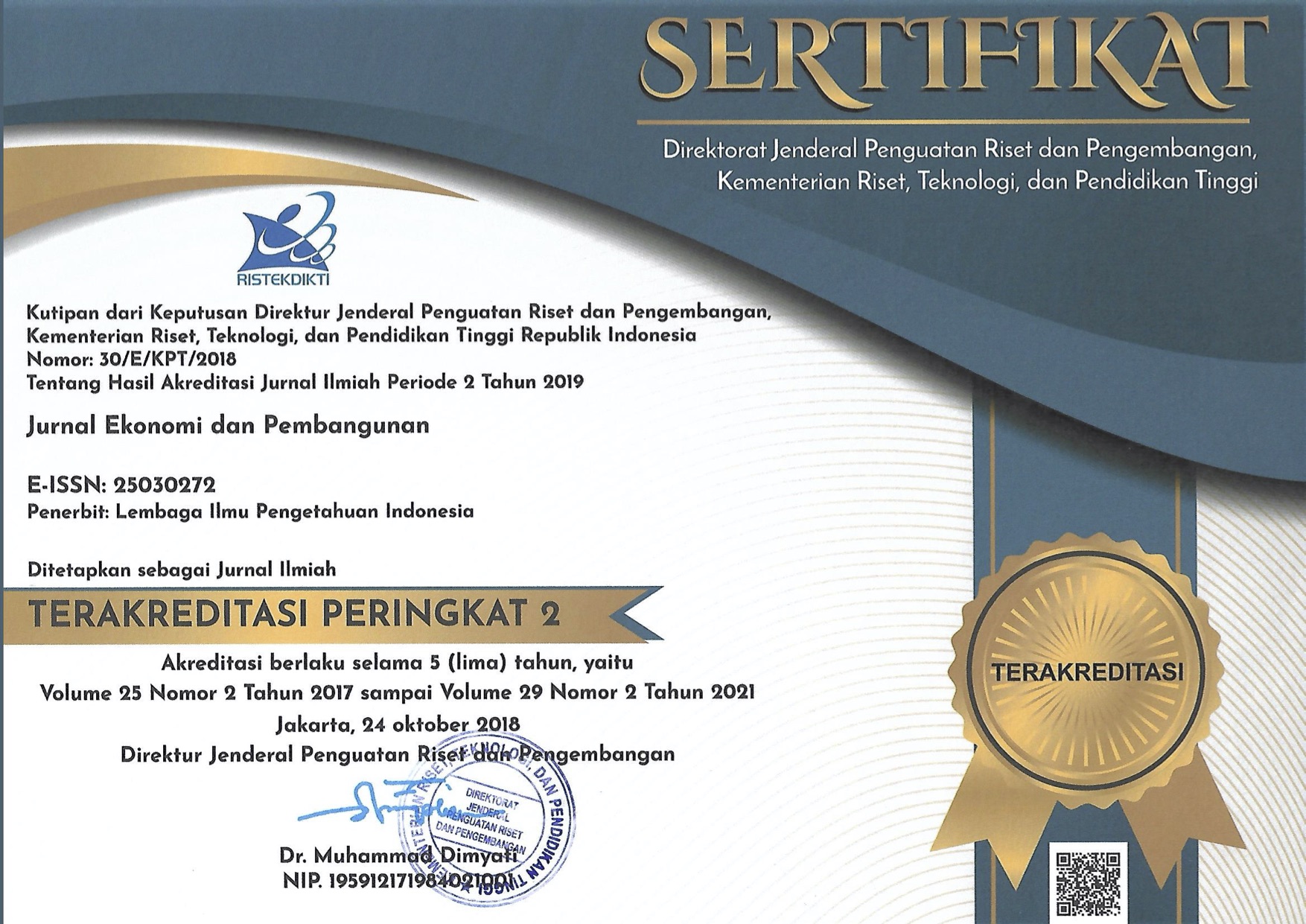DATA MINING USING CRISP-DM PROCESS FRAMEWORK ON OFFICIAL STATISTICS: A CASE STUDY OF EAST JAVA PROVINCE
Abstract
Data mining on official statistics becomes a study interest, as it offers an opportunity to reveal hidden patterns within the data. This study investigates the data mining process's appropriateness using the CRISP-DM method to a secondary-quantitative data analysis and to investigate hidden information revealed from data mining on official statistics. Data is collected from the East Java BPS website, and the unit of analysis is regency/municipality. Five macro development indicators (Human Development Index, Gross Regional Domestic Products, poverty rate, Gini Ratio, open unemployment rate) are selected as analysis variables. Workflows of data analysis are designed using Knime software. This study shows the usefulness of the CRISP-DM method for secondary research because it specifies standardized stages for analyzing secondary data and improves the secondary analysis rigor. Furthermore, the clustering technique classifies regencies/municipalities into three clusters. One of the clusters has desirable indicator levels: high Human Development Index - high Gross Regional Domestic Products - low poverty rate, together with undesirable ones: high Gini Ratio - high open unemployment rate. This result indicates that a regency/municipality might not achieve an ideal condition of the five macro development indicators. Some indicators such as the open unemployment rate might be an inevitable impact. This research adds to the literature on development economics studies, particularly on the application of data mining, the CRISP-DM method, and Knime software to official statistics.
Downloads
References
Copyright (c) 2021 Jurnal Ekonomi dan Pembangunan

This work is licensed under a Creative Commons Attribution-NonCommercial-ShareAlike 4.0 International License.
Terms and Conditions of Publication
1. Author's Rights and Authorities
As an author, you (or your employer or institution) may do the following:
-
make copies (print or electronic) of the article for your own personal use (not for commercial purpose), including for your own classroom teaching use;
-
make copies and distribute such copies (including through email) of the article to research colleagues, but not allowed to distribute commercially and systematically, e.g. via an email list or list server;
-
present the article at a meeting or conference and to distribute copies of the article to the delegates attending such meeting;
-
retain all proprietary rights in any process, procedure, or article of manufacture described in the work;
-
include the article in full or in part in a thesis or dissertation;
-
use the article or any part thereof in a printed compilation of your works, such as collected writings or lecture notes, and other derivative works, with full acknowledgement to JEP as the original journal publishing the article;
-
may reproduce material extracted from the article or derivative works for the author's personal use, but must consider the copyrights procedure.
All copies, print or electronic, or other use of the paper or article must include the appropriate bibliographic citation for the article’s publication in the journal.
2. Requests from Third Parties
Although authors are permitted to re-use all or portions of the article in other works, this does not include granting third-party requests for reprinting, republishing, or other types of re-use. Requests for all uses not included above, including the authorization of third parties to reproduce or otherwise use all or part of the article (including figures and tables), should be referred to P2E-LIPI by going to our website at http://ekonomi.lipi.go.id/.
3. P2E LIPI Copyright Ownership
Economic Research Center, the Indonesian Institute of Sciences (P2E-LIPI) owns the copyrights to reproduce, distribute, disseminate, translate, and other uses in accordance with the existing Laws and Regulations.
Every accepted manuscript should be accompanied by "Copyright Transfer Agreement" prior to the article publication.

This work is licensed under a Creative Commons Attribution-NonCommercial 4.0 International License.
JEP Journal by P2E-LIPI is licensed under a Creative Commons Attribution-NonCommercial-ShareAlike 4.0 International License. Permissions beyond the scope of this license may be available at http://jurnalekonomi.lipi.go.id/index.php/JEP
If you are a nonprofit or charitable organization, your use of an NC-licensed work could still run afoul of the NC restriction, and if you are a for-profit entity, your use of an NC-licensed work does not necessarily mean you have violated the term.






